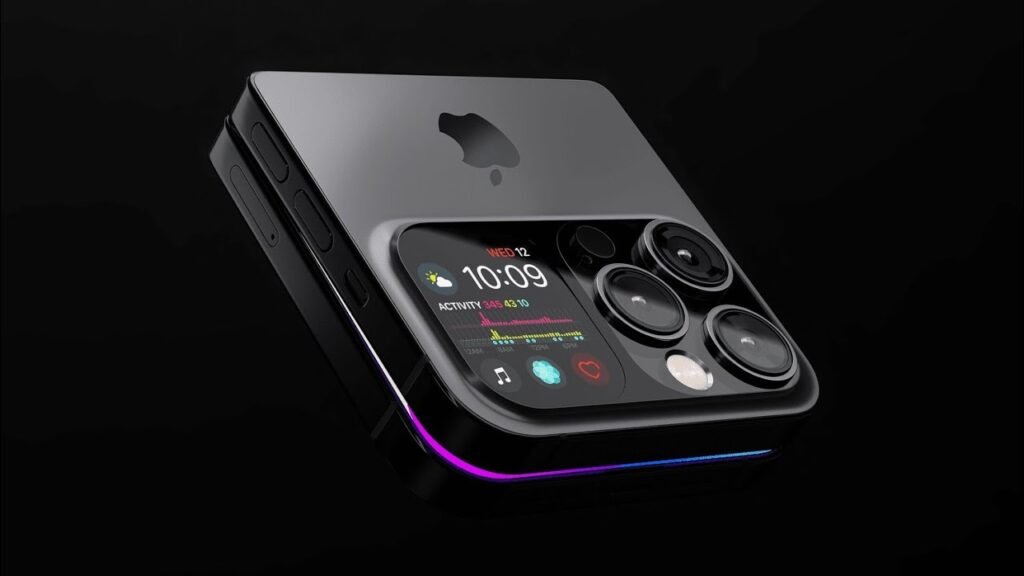Apple’s upcoming iPhone Fold has reignited the tech world’s imagination. Rumors suggest a massive 5,400–5,800mAh battery, a 7.58-inch foldable display, and a 5.38-inch cover screen. On paper, it looks like Apple is pushing boundaries once again. But underneath the hype lies a recurring issue: the price. Despite introducing innovative features, Apple devices continue to remain premium-priced, raising questions about accessibility and value.
In this article, we will critically analyze the iPhone Fold’s leaked features, Apple’s marketing strategy, the role of battery and performance, and why these perks alone don’t justify lower prices for consumers.
The iPhone Fold Battery: Bigger, Better, But Not Revolutionary
Leaks indicate that the iPhone Fold’s battery could range from 5,400 to 5,800mAh, surpassing the iPhone 17 Pro Max’s 4,823–5,088mAh units. On the surface, this sounds impressive, especially for foldable devices that notoriously drain batteries quickly.
Apple seems to be promoting battery life as a key selling point, emphasizing endurance for dual screens, multitasking, and media consumption. However, the reality is nuanced: while a bigger battery allows longer use, it’s not a game-changer for the average user who doesn’t use both screens simultaneously all day.
Critically, Apple’s marketing may overstate this benefit to create hype. Consumers see “bigger battery” and assume longer-lasting performance equals value—but the premium price of foldable iPhones often outweighs the practical advantages.
Foldable Design: Innovation Meets Marketing Strategy
The iPhone Fold reportedly includes a 7.58-inch main display and 5.38-inch cover screen. This dual-display design allows multitasking, enhanced media viewing, and a tablet-like experience in a smartphone form.
From a strategic perspective, Apple is using this as a marketing showcase, highlighting engineering prowess rather than mass-market utility. Foldable phones remain niche, and features like dual displays are impressive for tech enthusiasts but not necessarily essential for average users.
Apple’s approach here seems calculated: the Fold demonstrates innovation and premium engineering, boosting brand perception and justifying high prices—even if the actual day-to-day usability gains are moderate.
Performance and Endurance: Enough to Justify Hype?
Battery is just one part of the story. Apple is reportedly testing the Fold to ensure smooth performance across resource-heavy apps, gaming, and multitasking. While a larger battery supports this, it’s important to critically assess:
-
The battery advantage may not scale linearly with performance
-
Software optimization, not just raw battery, drives user experience
-
Users may not need dual screens constantly, meaning the bigger battery doesn’t impact all-day usage dramatically
Essentially, Apple’s battery push is as much about promotional narrative as functional improvement. It feeds the story of “Apple innovation” but doesn’t automatically translate to value for all buyers.
Why Apple Won’t Lower Prices: A Critical Analysis
Despite impressive specs, Apple rarely lowers prices for new models. Several factors explain this:
-
Brand Positioning: Apple markets itself as a premium brand. Lowering prices could dilute the perception of exclusivity.
-
Innovation Costs: Developing foldable technology, dual displays, and larger batteries involves expensive R&D and high manufacturing costs.
-
Profit Margins: Apple consistently maintains high profit margins—bigger battery and foldable design increase costs but are leveraged to justify pricing rather than reduce it.
-
Market Strategy: High prices target early adopters and tech enthusiasts willing to pay a premium, ensuring strong initial revenue before considering broader adoption.
From a critical lens, the iPhone Fold’s specs serve marketing and hype purposes more than consumer affordability. Apple highlights battery, foldable design, and multitasking as headline features to maintain brand prestige and justify pricing.
The Role of Hype in Apple’s Strategy
Apple is a master of creating anticipation. The iPhone Fold leaks—battery, screen sizes, dual-display benefits—fuel media coverage and social buzz. This hype is a calculated tool:
-
Leaks generate discussion and increase perceived value
-
Bigger battery and foldable features position Apple as an industry innovator
-
Premium pricing becomes more acceptable to consumers who are captivated by the “new tech” narrative
Critically, hype can sometimes mask the practical reality: the average user might not need a foldable device or an enormous battery. Apple is selling aspiration, not necessity.
Competitor Comparison: Foldable Market Reality
Samsung and Huawei dominate the foldable phone niche. The Galaxy Z Fold and Mate X series offer similar dual-screen experiences, but often with shorter battery life or lower software integration. Apple’s Fold, with a larger battery and iOS optimization, could outshine competitors in endurance and ecosystem synergy.
However, the critical insight is that even superior battery and performance don’t democratize foldables. These devices remain premium-priced, keeping mass adoption limited and reinforcing Apple’s high-end positioning strategy.
Are Battery and Foldable Perks Enough?
From a consumer perspective, a bigger battery and foldable screen sound exciting—but are they worth the cost?
-
Battery: Extended life is useful, but dual-screen usage isn’t daily for most
-
Foldable Design: Impressive for multitasking, but adds weight and complexity
-
Price: High enough to remain out of reach for the average buyer
The iPhone Fold illustrates Apple’s innovation-for-hype strategy: features are engineered to attract attention, generate headlines, and reinforce premium branding, rather than significantly lower prices or make devices accessible to everyone.
Critical Takeaways
-
Apple leverages specs like battery and foldable design as promotional tools
-
Higher prices persist despite functional improvements, preserving brand exclusivity
-
Consumer utility vs. marketing hype is a key debate: many users may not benefit daily from foldable features
-
Industry influence: Apple’s move pressures competitors to improve foldable battery and software, maintaining innovation race
In essence, the iPhone Fold is Apple proving its engineering prowess, not redefining value for the average consumer. Battery and foldable perks serve as headline features, ensuring the product remains aspirational and justifies a premium price tag.
Read More: Best Mobile in Pakistan Under 50000


